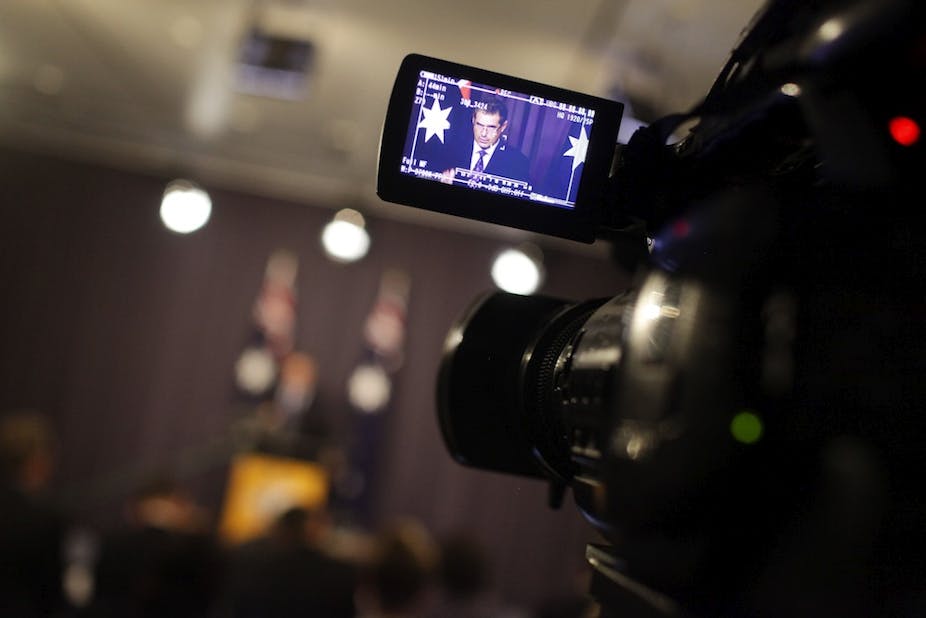Yesterday, communications minister Senator Stephen Conroy finally presented the government response to the Convergence Review and Finkelstein review.
It is hard to know how many drafts of this long-awaited response have been generated in the minister’s office, but what has finally been put forward is decidedly low-key. It is focused on current concerns and existing media players more than a convergent media future.
Core reforms
Given the fanfare with which the initial media enquiries were announced, and the mix of hope and trepidation that surrounded what they may recommend – a fair part of which was generated by the media itself – a modest set of recommendations has emerged.
Among the core reforms proposed are:
A press standards model that maintains self-regulation, but beefs up the role of the Press Council and clarifies its standing in relation to online as well as print media;
The introduction of a Public Interest Test for future media takeovers and mergers, including the creation of a Public Interest Media Advocate (PIMA) to evaluate their implications for media diversity;
Updating the ABC and SBS charters to explicitly incorporate their online activities as core to their public service mission;
Continuing allocation of the sixth free-to-air channel to community television, or, put differently, a continuing prohibition on a fourth free-to-air commercial TV service;
Making permanent the 50% licence fees rebate for commercial television broadcasters, subject to their meeting new Australian content obligations, particularly on their digital multichannels.
Old world thinking
This package of measures is hardly the “new policy and regulatory framework” the Convergence Review believed was the necessary response to technological and audience changes rendering the existing legislative framework redundant.
Yes, the new policy recommends changes to media ownership, news standards, public broadcasting and Australian and local content that are largely with the convergence review recommendations, but these still largely sit within the established media “silos” of print, broadcasting and online media.
More radical proposals, such as setting content standards for Google, or eliminating broadcasting licences altogether, are clearly off the agenda.
Legislating the public interest
The proposal for a public interest test for media mergers and acquisitions, and the creation of a Public Interest Media Advocate (PIMA), are the recommendations most consistent with the spirit of the convergence review.
The review proposed that a revised media policy framework needed to be “technology-neutral”, avoiding structural biases for or against any particular media platform or service type, while recognising that public interest questions about media ownership concentration or the loss of local content still matter.
The PIMA proposal walks the line between establishing more flexible, less prescriptive approaches to regulating media ownership, without fully abandoning controls in the interests of securing media diversity. It draws upon the concept of soft law, whereby legislation establishes a general principle – in this case media diversity – and grants decision makers a degree of autonomy in determining the scope of its application in particular cases.
Soft law is seen by many as a necessary response to rapid technological change, where events are moving too quickly for parliaments to be able to regularly update legislation.
The politics of change
Senator Conroy indicated his personal preference for eliminating what he sees as legacy rules, such as the maximum 75% audience reach rule for commercial broadcasters. This rule clearly assumes that services such as broadcast news are only accessed through broadcast media, whereas they are clearly now available to 100% of Australian homes with a reasonably fast internet connection.
It is worth remembering that almost no Australian homes had an internet connection when these initial restrictions were passed, let alone access to YouTube and on-demand media services.
But the politics of legislating for changes to media laws in a political context where the government lacks a majority in either house, and where an election is six months away can also be seen in the Conroy’s response to the reviews.
A modest proposal
Rather than presenting a single set of legislative changes to parliament, Conroy has instead opted to unbundle the proposals. This means the licence fee rebate and the changes to the ABC and SBS charters do not hinge on how parliament responds to the PIMA proposal. The former could be passed even if the latter is rejected.
What has finally emerged is a compromise set of changes; a very cautious, and in many ways piecemeal, response to the proposals of the Convergence and Finkelstein reviews. It has probably not modernised media laws sufficiently to “tackle the challenges of the future”, although it does make some overdue changes to existing law.
Given the lack of community consensus as to what media laws should prioritise, it would have been hard to have advanced further without a clearer mandate for change than the federal government currently possesses.
It would appear that a larger overhaul of media policy and regulation to meet the challenges of convergence will need to wait for another occasion.

